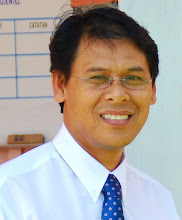LENGGONG Valley in Upper Perak, where the government is seeking Unesco world heritage site status, is a jewel in Malaysia’s archaeological crown.
Dubbed “an archaeologist’s dream valley”, the undisturbed site has many more discoveries to be unearthed by the local archaeologists in years to come.
 How they lived: An exhibit at the Lenggong Archaeology Museum depicting the daily life of prehistoric men at the Gua Teluk Ke lawar.
How they lived: An exhibit at the Lenggong Archaeology Museum depicting the daily life of prehistoric men at the Gua Teluk Ke lawar. Commissioner of Heritage Prof Emeritus Datuk Zuraina Majid said a series of important discoveries in the valley had contributed enormously to the nation’s prehistory knowledge.
She said Palaeolithic finds such as Kota Tampan was extremely rare in South-East Asia.
“Kota Tampan stimulated enormous interest in the archaeological world attracting the attention of both academics and the general public,” said Zuraina.
For many years, she had led teams comprising scientists from Universiti Sains Malaysia and various institutions and technical staff from local museums in archaeological work in the Lenggong Valley.
 Used daily: Pebble tools found in Gua Teluk Kelawar.
Used daily: Pebble tools found in Gua Teluk Kelawar. “Our work there was repaid by a number of important discoveries, including the finding of evidence that established the valley was home to the earliest known Malaysian inhabitants, dating back to possibly 200,000 years ago, 160,000 years earlier than previous studies had indicated,” she said.
Excavations between 1987 and 1990 revealed that Kota Tampan was a stone age workshop dating as early as 50,000 years ago.
It was also discovered that there was a stone age community living in the surrounding Lake Cenderoh.
 Priz ed: Four-tiered cord-marked pottery found in Gua Harimau.
Priz ed: Four-tiered cord-marked pottery found in Gua Harimau. Several findings had considerable impact on regional and world archaeology.
Among these are the ‘Perak Man’ (the only prehistoric skeleton in the world born with the congenital deformity Brachymesophalangia Type 2) in Gua Gunong Runtuh, Palaeolithic stone tool-making techniques in Kota Tampan, the migratory route of Homo sapiens from Asia to Australia, and the revelation that South-East Asia was not the backwaters of civilizations as claimed by earlier archaeologists.
USM Centre for Archaeological Research Malaysia director Assoc Prof Dr Mokhtar Saidin had recently said hand-axes and evidence of a meteorite impact 1.83 million years ago were discovered at Bukit Bunuh.
He said Bukit Bunuh,would be the oldest prehistoric settlement in the world after Africa according to chronometric dating.
Lenggong Archaeology Museum assistant curator Nur Aidah Pirus said Gua Harimau was another significant archaeological site where 11 Neolithic-Bronze burials were discovered. Pottery, stone tools, bronze, iron, ornaments, hematite and food remains were found together with the skeletons.
 Preh ist ori c graves : Replica of Gua Harimau burials at the museum.
Preh ist ori c graves : Replica of Gua Harimau burials at the museum. The discovery of the bronze and its mould, dated around 4,500 years old, indicated that bronze craftmanship was not confined to the northern part of Thailand (Ban Chiang) alone.
Another site is Gua Kelawar where human habitation is evident since 10,000 years ago. It is located at Bukit Kepala Gajah, a limestone massif which also includes Gua Gunung Runtuh where Perak Man was found.
The Kampung Temelong Paleolithic Site is located about 3km from Lenggong town, and 1km south of Bukit Jawa. Archaeological evidence reveals that Kampung Temelong could be as old as Bukit Jawa which is 300,000 years old.
Negrito charcoal paintings by early orang asli settlers are found on the walls of Gua Badak.
Article Source :The Star Online








0 comments:
Post a Comment